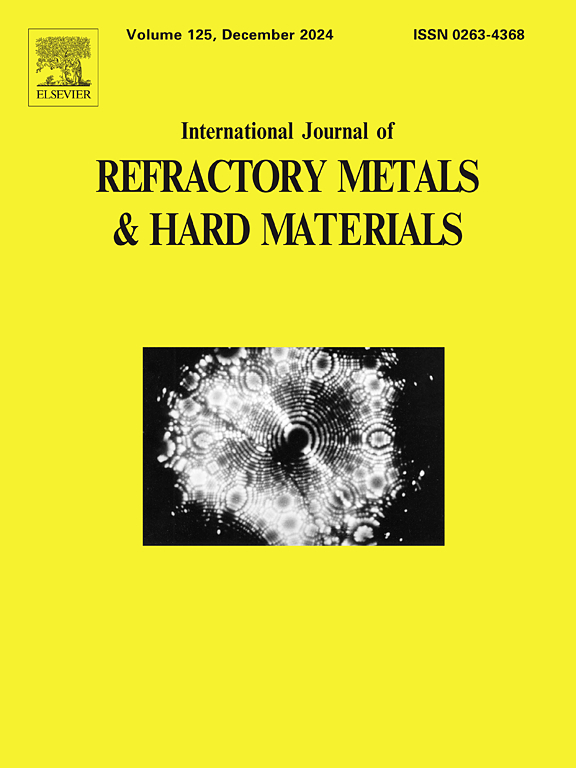Enhanced wear resistance of CuSn19Ti10/Ni-coated diamond composite coatings prepared by laser cladding: Influence of nickel plating on diamond retention and microstructure
IF 4.2
2区 材料科学
Q2 MATERIALS SCIENCE, MULTIDISCIPLINARY
International Journal of Refractory Metals & Hard Materials
Pub Date : 2025-01-18
DOI:10.1016/j.ijrmhm.2025.107066
引用次数: 0
Abstract
This study investigated the effects of nickel (Ni) coating on diamond particles in CuSn19Ti10/diamond composite coatings fabricated on pure copper substrates using laser cladding. Prior research emphasized that diamond retention is key to improving the wear resistance of these coatings. Here, Ni-coated diamond particles were incorporated to enhance bonding. The composite coatings, containing 2.5, 5, and 10 wt% of Ni-coated diamond, were systematically characterized through scanning electron microscopy (SEM), energy dispersive spectroscopy (EDS), X-ray diffraction (XRD), and wear testing. The microstructural analysis revealed the presence of α-(Cu), Cu2SnTi, (Cu,Sn)Tix, TiC, and diamond phases. Compared to uncoated diamond composite coatings, the Ni-coated diamond composite coatings demonstrated significantly improved wear resistance, with wear rates reduced by 8.54 %, 15.52 %, and 85.44 %, for 2.5, 5, and 10 wt% Ni-coated diamond, respectively. The enhancement in performance can be attributed to the laser's high temperature, which allowed the Ni dissolution within the metal matrix to facilitate the diffusion between Ti and C, enhancing the Ni-coated diamond's retention capacity in the metal matrix. The Ni-coated diamonds were more firmly retained in the matrix during wear, reducing pull-out and enhancing the overall wear resistance of the coating. The findings suggest that Ni-coating on the surface of diamonds is an effective strategy for improving the wear resistance of diamond-reinforced metal matrix composite coatings.
求助全文
约1分钟内获得全文
求助全文
来源期刊
CiteScore
7.00
自引率
13.90%
发文量
236
审稿时长
35 days
期刊介绍:
The International Journal of Refractory Metals and Hard Materials (IJRMHM) publishes original research articles concerned with all aspects of refractory metals and hard materials. Refractory metals are defined as metals with melting points higher than 1800 °C. These are tungsten, molybdenum, chromium, tantalum, niobium, hafnium, and rhenium, as well as many compounds and alloys based thereupon. Hard materials that are included in the scope of this journal are defined as materials with hardness values higher than 1000 kg/mm2, primarily intended for applications as manufacturing tools or wear resistant components in mechanical systems. Thus they encompass carbides, nitrides and borides of metals, and related compounds. A special focus of this journal is put on the family of hardmetals, which is also known as cemented tungsten carbide, and cermets which are based on titanium carbide and carbonitrides with or without a metal binder. Ceramics and superhard materials including diamond and cubic boron nitride may also be accepted provided the subject material is presented as hard materials as defined above.

 求助内容:
求助内容: 应助结果提醒方式:
应助结果提醒方式:


